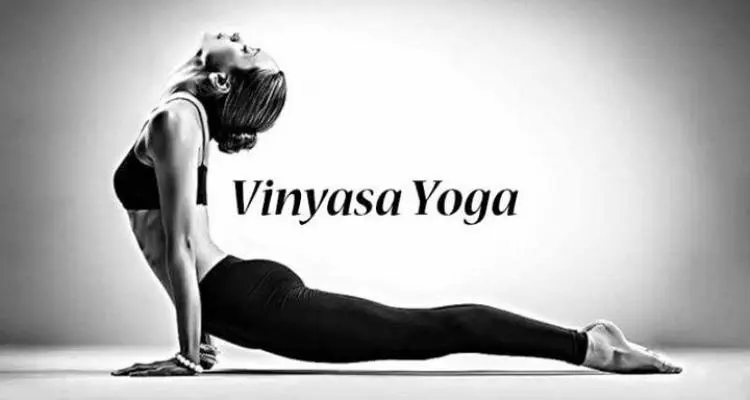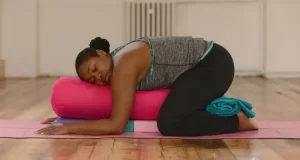Vinyasa yoga, often referred to as “flow yoga,” is a dynamic and invigorating style of yoga that synchronizes breath with movement. Originating from the ancient teachings of Hatha yoga, vinyasa yoga offers a transformative practice that combines physical exercise, breath control, and mindfulness. In this comprehensive article, we will delve into the essence of vinyasa yoga, its benefits, key principles, and how it can empower individuals to cultivate a harmonious connection between body, mind, and spirit.
Understanding Vinyasa Yoga
Vinyasa, derived from the Sanskrit words “vi” (meaning “sequence”) and “nyasa” (meaning “placement”), emphasizes the fluid and continuous movement between yoga poses. Unlike other yoga styles that hold postures for an extended period, vinyasa yoga encourages practitioners to seamlessly flow from one pose to another, creating a dynamic and rhythmic practice.
The Flow of Breath and Movement
Central to vinyasa yoga is the synchronization of breath and movement. Each movement is linked to an inhalation or exhalation, guiding practitioners to cultivate a focused and conscious breath. This union of breath and movement creates a graceful flow that promotes mindfulness, allowing practitioners to anchor their awareness to the present moment.
Also Read
The Benefits of Vinyasa Yoga
1. Physical Fitness
Vinyasa yoga offers a full-body workout, building strength, flexibility, and endurance. The continuous flow of movements enhances cardiovascular health, tones muscles, and increases overall physical stamina.
2. Mindfulness and Stress Relief
The rhythmic nature of vinyasa yoga encourages practitioners to stay present, fostering a deep sense of mindfulness. The focus on breath and movement helps calm the mind, reduces stress, and promotes relaxation.
3. Improved Flexibility
The dynamic nature of vinyasa yoga, combined with intentional stretching, gradually increases flexibility and range of motion. Regular practice can help alleviate muscle stiffness, enhance joint mobility, and promote overall suppleness.
4. Balance and Body Awareness
Vinyasa yoga challenges practitioners to maintain balance and stability while transitioning between poses. This cultivates a heightened sense of body awareness, coordination, and proprioception.
5. Energy and Vitality
The combination of movement, breathwork, and mindfulness in vinyasa yoga helps to invigorate the body and increase energy levels. Regular practice can leave practitioners feeling refreshed, rejuvenated, and ready to take on the day.
Key Principles of Vinyasa Yoga
1. Breath Awareness
The breath is the foundation of vinyasa yoga. Practitioners are encouraged to synchronize each movement with either an inhalation or exhalation, allowing the breath to guide the flow.
2. Sequencing
Vinyasa yoga follows a carefully crafted sequence of poses, known as a “vinyasa flow.” These sequences are intelligently designed to create a balanced practice, gradually warming up the body, building intensity, and ending with a cool-down phase.
3. Transitions
Smooth transitions between poses are essential in vinyasa yoga. Practitioners focus on maintaining a steady and controlled flow, moving with grace and intention.
4. Modifications and Variations
Vinyasa yoga offers a multitude of modifications and variations to accommodate practitioners of different levels. This allows individuals to adapt the practice to their own needs, ensuring a safe and enjoyable experience.
5. Mindfulness and Intention
Vinyasa yoga emphasizes the connection between body and mind. Practitioners are encouraged to cultivate mindfulness, focus on the present moment, and approach their practice with intention and self-awareness.
Practicing Vinyasa Yoga
To experience the transformative power of vinyasa yoga, consider the following steps:
1. Find a Qualified Instructor
It is beneficial to learn vinyasa yoga from a qualified instructor who can guide you through the principles and provide proper alignment cues.
2. Start with Foundation Poses
Begin with foundational poses and gradually progress to more advanced sequences as you build strength and familiarity.
3. Listen to Your Body
Honor your body’s limitations and practice with self-compassion. Avoid pushing yourself beyond your comfortable range of motion and respect your body’s needs.
4. Breathe with Intent
Focus on deep and conscious breathing. Inhale to create space and expansion, and exhale to release tension and find stability.
5. Embrace the Flow
Allow the flow of movement and breath to guide your practice. Embrace the sense of fluidity and surrender to the present moment.
Conclusion
Vinyasa yoga offers a dynamic and transformative practice that unites the body, breath, and mind. Through its flowing sequences, intentional breathing, and mindfulness, vinyasa yoga empowers individuals to cultivate physical strength, flexibility, and mental clarity. By embracing the practice of vinyasa yoga, one can embark on a journey of self-discovery, inner peace, and holistic well-being. So, step onto your mat, breathe deeply, and let the transformative flow of vinyasa yoga carry you towards a more balanced and vibrant life.














